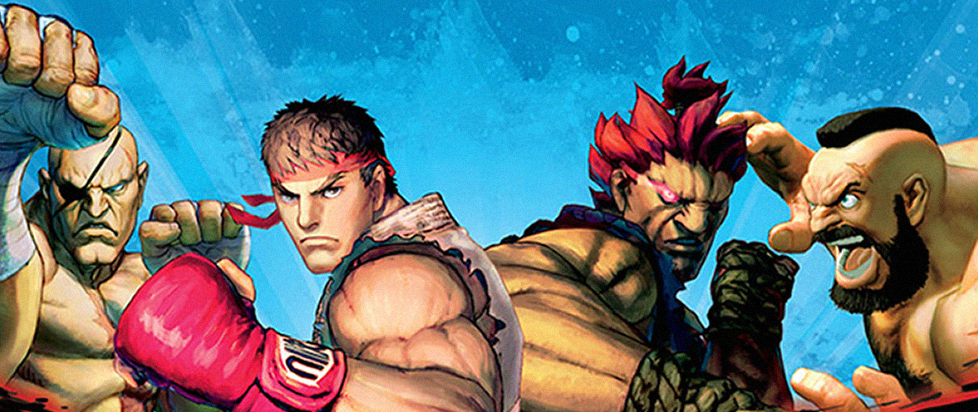
New Street Fighter for Old Hands
Time is a relentless waterfall that drenches every one of us, from our first wails to our last sigh. It also warps and bends as our perception of it shifts from the gush to the drop, years and seconds both compress and expand depending on the lens through which we are feeling the fourth dimension. But ultimately those lenses scratch, our senses are dulled, and our once infinite energy and indestructible bodies are worn raw.
As a bald man with a snow-dusted beard, I feel time’s fingers crawling up my back. Their dusty grace gives me the most goosebumps when I watch professional competitive fighting games, like when I dared dream that I might enjoy Dragon Ball FighterZ—probably the most accurate Dragon Ball Z anime simulator that could possibly exist. And I did have fun for a little while, but there’s a digital elegance to these pro players that is simply beyond my potential understanding anymore. It took the last of my energy to master Akuma’s Shun Goku Satsu super move just to troll my then-roommate. I have that move and other gold-standards burned into my muscle memory right next to the chords for “Smells Like Teen Spirit,” but bless these pros, they’re snuggled into a whole other dimension.
Those muscles do itch now and again though—many teenage years full of hadokens and spinning piledrivers leave a lasting desire. Rather that accept a fate as pulp for the following generations though, I’m glad to have discovered the Exceed fighting game system, a card game setup that operates like a universal one-on-one tabletop equivalent to the fighting videogame genre. Level 99 games has combined forces with Jasco games on this particular iteration of the core Exceed setup, bringing Street Fighter Season 3 to the table with twelve familiar fighters spread across three separate boxes.
A lot of games try to replicate, if not exactly duplicate, the inherent friction and flow of what’s splayed on screens, but it’s often a difficult transition. Fighting games in particular depend on so much reflex and choreography that it was hard to conceive of this system aiming for anything other than a kind of strategy-lite application of ancestral uppercuts and hurricane kicks. Street Fighter Exceed obliterates any such assumptions though, making me question why so many other videogame-to-tabletop adaptations struggle to distill their essences down like this one.
The backbone of this two-player card beatdown rests on nearly the exact same assumption as its inspiration—actions and reactions. The difference being that each player can live in the pocket a little longer, think through their options with a bit more breath. The number of decisions is kept taut though, and that relative stretching of time where Exceed really nails the Street Fighter feel. Each player is allowed a number of options during their turn, but can only typically take one. As card games go there are many ways to bow this foundation, but for the most part, you play a card, and I either play one directly in response (because you initiated a strike, or a direct attack) or I take a moment to set up my combos. There are boosts as a way of creating chains of effects, planning ahead for a major combo (as Akuma often does in reflection of the source material) or just getting in the mix with pure aggression (like Ken, who is in constant pursuit).
Each characters deck has a set of standard cards from player to player so not every action is completely foreign, and each player is encouraged to keep in mind what has been played and what might potentially come up. And while you certainly don’t have to slap cards down immediately one after another, as you become more familiar with the tide of Street Fighter Exceed one can’t help but sway to the beat a little, trade card-drawing preparatory dances or cancel their opponent’s boosts. Many times your choices are somewhat limited but that makes reading the situation for your most opportune action or reaction that much more valuable; giving an inch can spell the difference between a sliver of your starting 30 points of health or a double-digit percentage.
Therein Street Fighter Exceed sings. It mimics the split-second decision making of the originator in spirit, effectively expanding out the sweet stings and time-squeezing sensations of Street Fighter II and its many, many progeny. You are meant to familiarize yourself with the intricate patterns of not only your character’s deck, but with some common familiarity and attention paid, your opponent’s as well. The dance is slowed down but that doesn’t make it predictable. Each strike comes quick as players reveal their attacks simultaneously, and different values (including speed, armor, power, and more) manipulate the minuscule moment in constantly shifting ways to make each one something of a surprise. It’s Street Fighter in slow motion for sharp brains chained to tired hands, the essence of competitive fighting deconstructed, and if nothing else I am grateful for the opportunity to continue trolling my lifelong friends through Akuma until time simmers down for us all.





